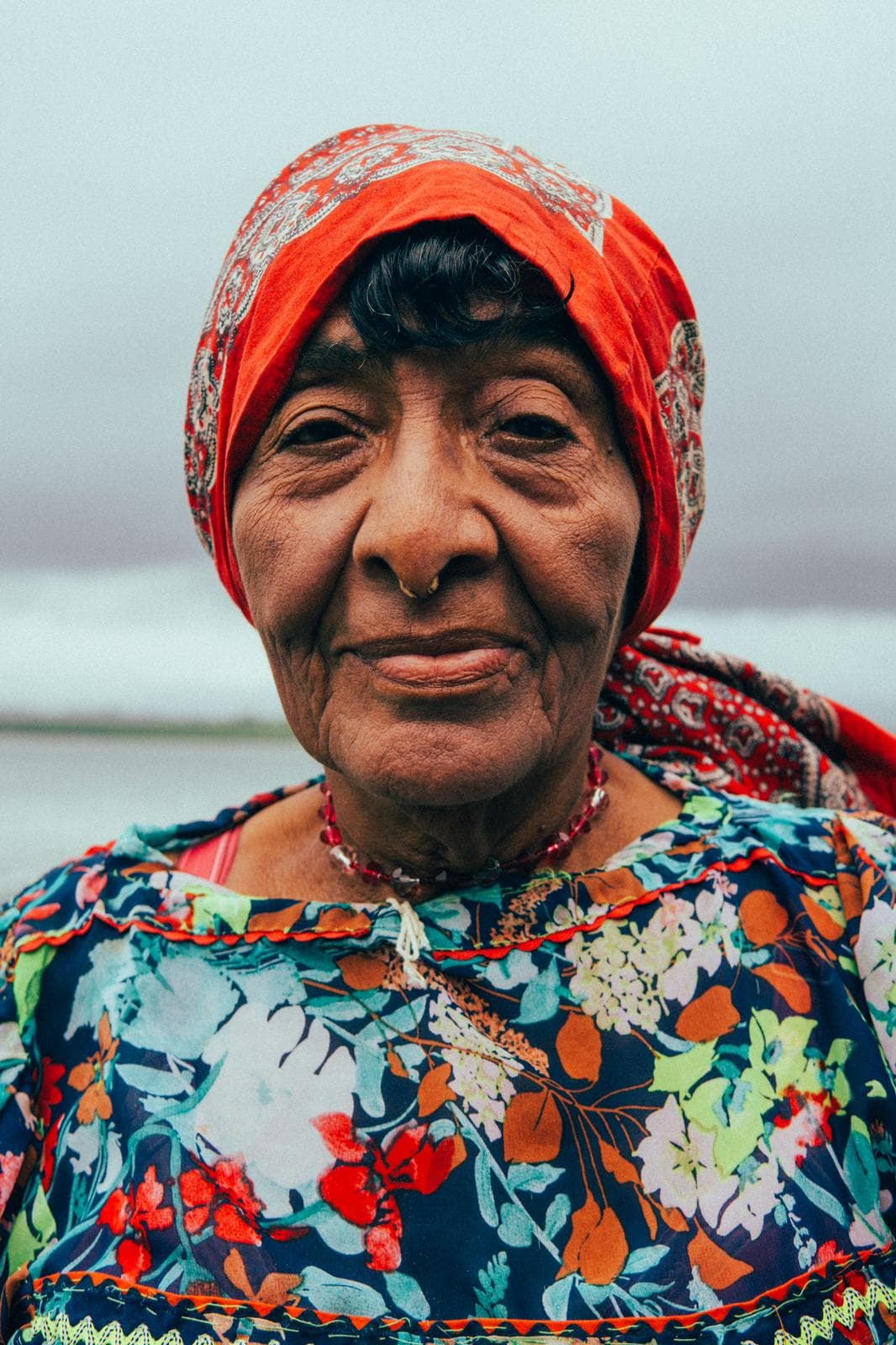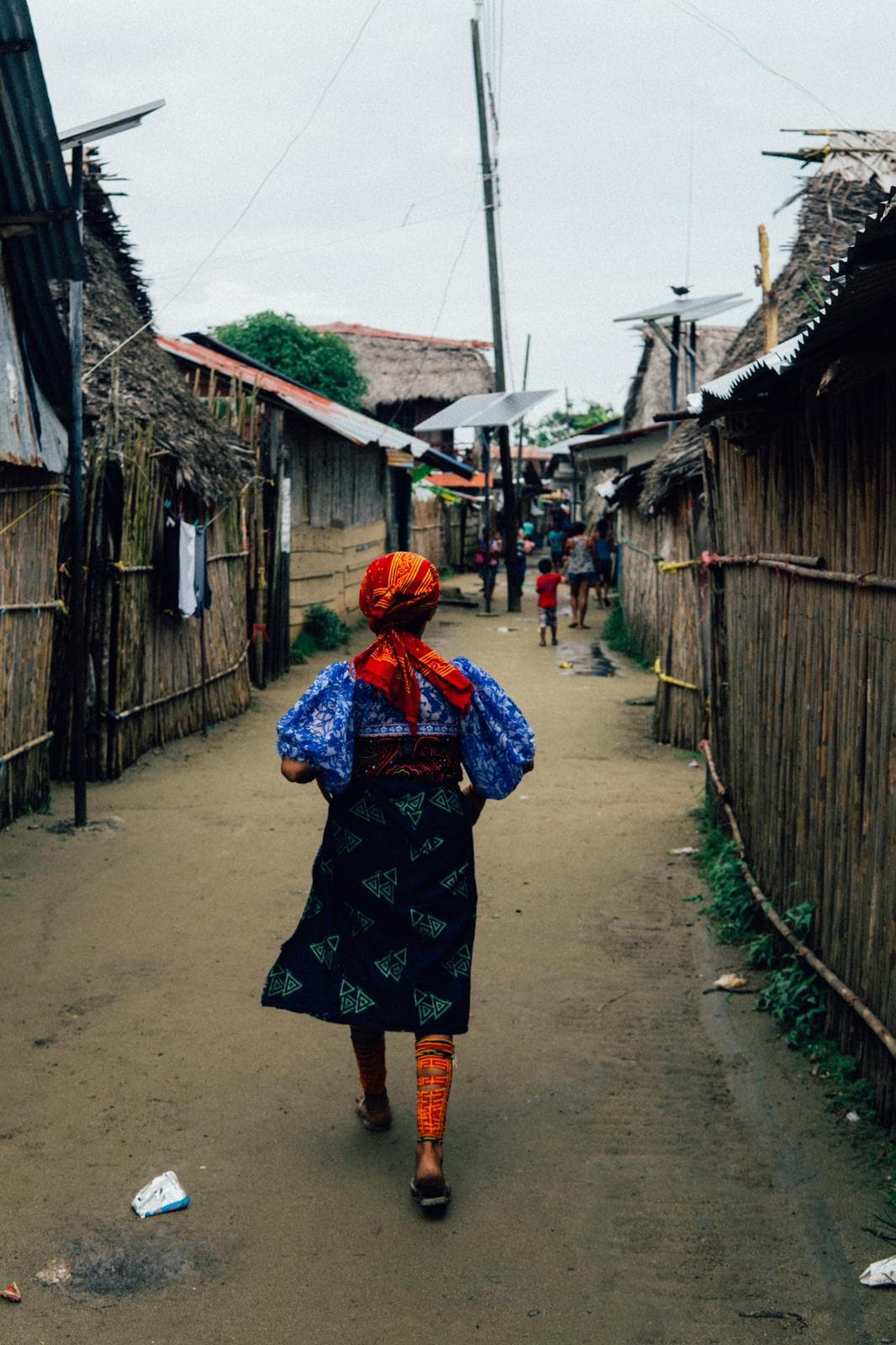In January 2009, journalist Alister Doyle, traveled to Antarctica to visit a research base where scientists were examining the effect of melting ice on sea level rise.
'The Big Melt': stories from the frontlines of climate change
A new book tell first hand stories from Antarctica, Panama, Peru and Fiji that help shed light on the climate crisis and the international efforts of scientists, activists and politicians to address it. (Leer en español)


A few weeks later this part of the Wilkins Ice Shelf broke up into massive icebergs, “probably after being in place for thousands of years,” Doyle writes in his book The Great Melt, published last week.
Doyle recalls then Secretary of State Hillary Clinton telling a conference a few days later that the break-up of the Wilkins Ice Shelf was a reminder “that global warming has already had enormous effects on our planet, and we have no time to lose in tackling this crisis.”
Antarctica, the size of the United States and Mexico has enough ice to raise world sea levels by 58 meters if it ever melted. Man-made greenhouse gases are thawing as much as two billion tonnes of ice on land every day, Doyle points out, potentially raising sea level by as much as seven meters by 2300. That’s taller than a giraffe, he writes.
Doyle served as the former environment correspondent with Reuters news agency from 2004-2019, attending 13 United Nations climate conference around the world, from Milan to Bali. At the same time he traveled to many far flung places to observe the climate crisis with his own eyes.
Doyle, who lives in Oslo, Norway, spoke with Univision’s David Adams about what he witnessed while writing his book and his expectations for COP26 which began in Glasgow on Sunday.

David Adams: Why did you decide to write this book. Was there a moment that inspired it during your career covering the environment for Reuters?
Alister Doyle: I've been to 13 of these COP conferences and it seems to me that the most vulnerable to climate change are the people living on the front lines. It's obvious, but they don't often get a very loud voice in this. In the talks in Copenhagen in 2009, there was a sland states in the Pacific or the Indian Ocean or the Caribbean, the most worried by sea level rise, it seemed an incredible insult to them. Some of them went around with little pencils and climbed up to draw in their other islands, with the names of their countries. So, these are the stories of people on the front lines of climate change have often been omitted.
Univision: What did you see when you went to look for the signs of climate change? What struck you the most?
Doyle: I think the place that struck me the most was I went to Fiji and I met a man there who's the chief of the small village who now lives up on the hillside. The Fijian government moved the entire village to higher ground. But he took me down to the coast to about one and a half miles away. He showed me this patch of sort of yellowish sand overhung by coconut palms. He just pointed to the stumps sticking out of the out of the sand, and he “this is my house.” This was the place where he was born in the late 50s. He's in his 60s now. It was washed away, he says, by sea level rise.

He built a new house a little bit inland, but then got flooded by the rising seas, so he had to move again. And so, 140 villagers have moved inland there. What struck me was a lot of international reports, and the Fijian government, hailed this as a huge success. But he, he and others in the village said they all voted for the opposition in the elections, even though they've been saved from sea level rise. They're suffering. They feel that the project has not been fully completed. And of course, they're victims of something that’s got nothing to do with them. The emissions that have caused the sea levels to rise have come from industrialized economies; the United States, China, the European Union, India.
Univision: In the book you describe another community in Panama in a similar situation.
Doyle: Yes, in Panama there are islands that are suffering from overcrowding off the Caribbean coast, the people of Guna Yula who live on these islands, 365 of them, one for every day of the year. They want to move to the mainland. There's almost 1,500 people living on an island that's barely 400 meters long. It's more crowded than London or New York per square meter. And I spoke to a man there who said he'd seen sardines swimming through his home one day when a storm blew the sea into his house and across the whole island.
The Panamanian government and the Inter-American Development Bank have been funding a school and a hospital on the mainland. But it's all kind of fallen into disrepair and got bogged down. Covid-19 has also caused delays. So, so now it looks like they’re moving in 2023.

.jpeg&w=1280&q=75)


Univision: In the book you have chapter on Peru on the issue of ‘attribution science.’ I had never heard that term before and you explain that it refer to lawsuits over climate change damage. You mention there are 550 lawsuits around the world in 38 nations. What is the future of lawsuits against big companies from the victims of climate change. Can they succeed?

Doyle: I think definitely there's going to be a surge in these lawsuits that been climbing rapidly in the last few years. This lawsuit in Peru is a long shot, but it's certainly got big companies scared. You see legal opinions written by quite prominent law firms about what happens if this guy wins his lawsuit and you know, it could have a cascading effect of then if he can say that a company in Germany is responsible for melting his glacier.

Then everybody who's ever emitted any greenhouse gases could be held responsible for any harm around the world. That would be bigger than tobacco, bigger than asbestos. It would tear the world economy apart. But, it is a stretch. And as the people behind the (Peru) lawsuit, German Watch say, they don't want to make this into a sort of a great avalanche of legal claims. They just want to make the point that you can attribute climate change to emissions, you can link them in some ways and there is growing evidence that we are to blame. The latest report from the UN panel of climate scientists (IPCC), says it is unequivocal that we're to blame for the rising temperatures that come from human emissions. A court of law uses the standard of overwhelming evidence or proof. So, the question is, can it be proven unequivocally that someone is melting a glacier on the other side of the world.
They decided to do it in Germany because Germany is very advanced in its climate legislation, and I think it would be a nonstarter to try and the United States or Russia or somewhere. But the court in Germany is giving it a preliminary hearing, at least having thrown out once.
Univision: So, you could have a local scenario, where a group of people sue for the damage that they feel is being caused to their immediate surroundings?
Doyle: There are many constitutional lawsuits, especially in the United States, arguing a right to life is threatened by rising sea levels. A lot of youth lawsuits in the United States are claiming that. None of them have succeeded yet. There was also the case here in Norway where I live, which said the Arctic drilling violated the Norwegian Constitution, which guarantees the right to a sustainable environment.
The constitutions of countries vaguely worded in that sense. But if you say that you're violating my right to life if the sea rises by a meter during my lifetime. Imagine, if you're born today, you'll be 79 in the year 2100. And you might say, “Well, that's my right to a sustainable life, you know, if I'm living by the sea seashore in Miami.”
Univision: You are heading to your 14 th COP conference. What kind of progress do you do you see since your first one?
Doyle: There has been some progress. One of the first ones I went to was Montreal in 2005, where I still have a plastic duck that I keep in my bath tub. That’s because at the conference the United States (George W Bush administration) said “we are not going to talk about a new treaty to fight climate change. We're not interested.” At one meeting late at night, the other countries were asking the Americans, “Please, can we just talk about something like an open ended dialog about climate change or about non-binding talks, something or other about cooperative actions on climate change?” And the American delegate picked up his papers, picked up his bags and said, “If it looks like a duck, quacks like a duck, flaps its wings like a duck, then it is a duck,” and he walked out in the middle of the night.” The next day all the activists bought every plastic duck in Montreal and put them around the conference hall as a sign, making fun of the Americans.
So, we've gone from a time when the Americans were not even willing to talk about it, to a point where we've now got a climate treaty and all sorts of things are happening. You know, companies, investors, and the youth are also lining up to do stuff now. And even the Paris Agreement itself said that we should reach net zero emissions in the second half of the century. In practice, most governments now have set that date to 2050. So, the urgency of action on climate change has increased. Because of the more scientific evidence, like that ice shelf I visited in 2009 which has disappeared off the face of the planet, there is more urgency for action now.









